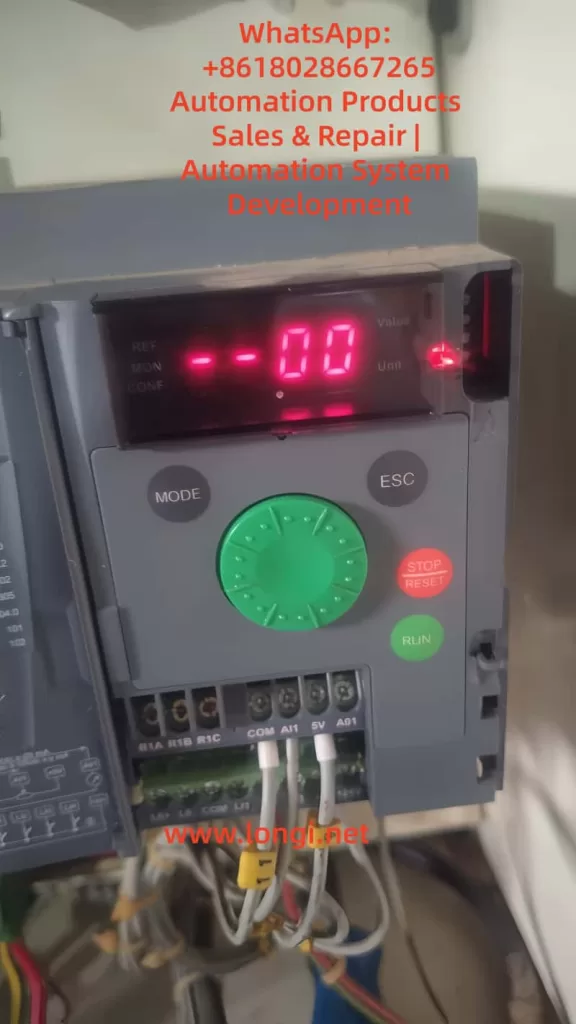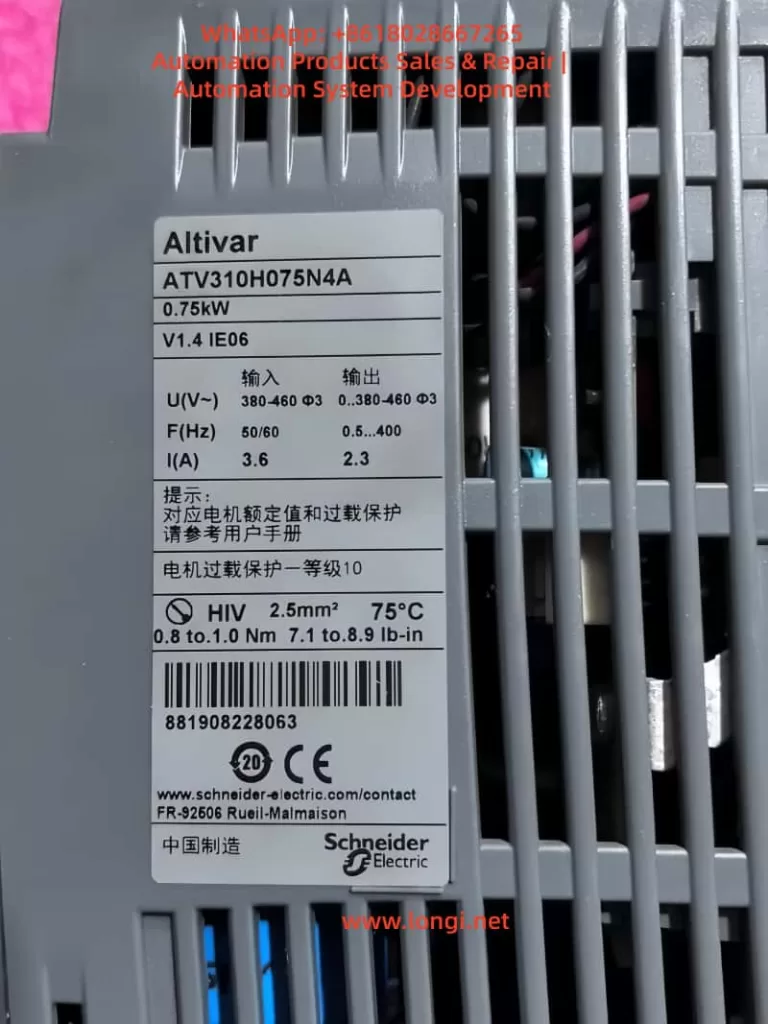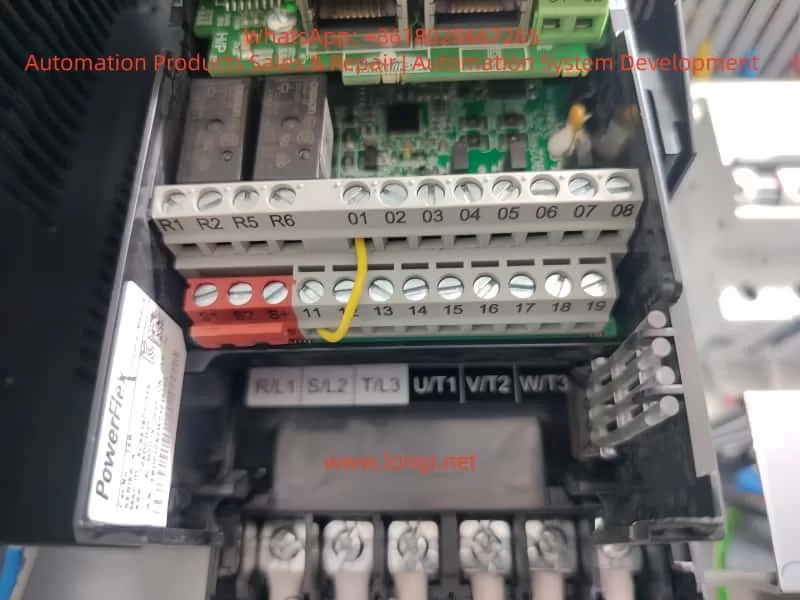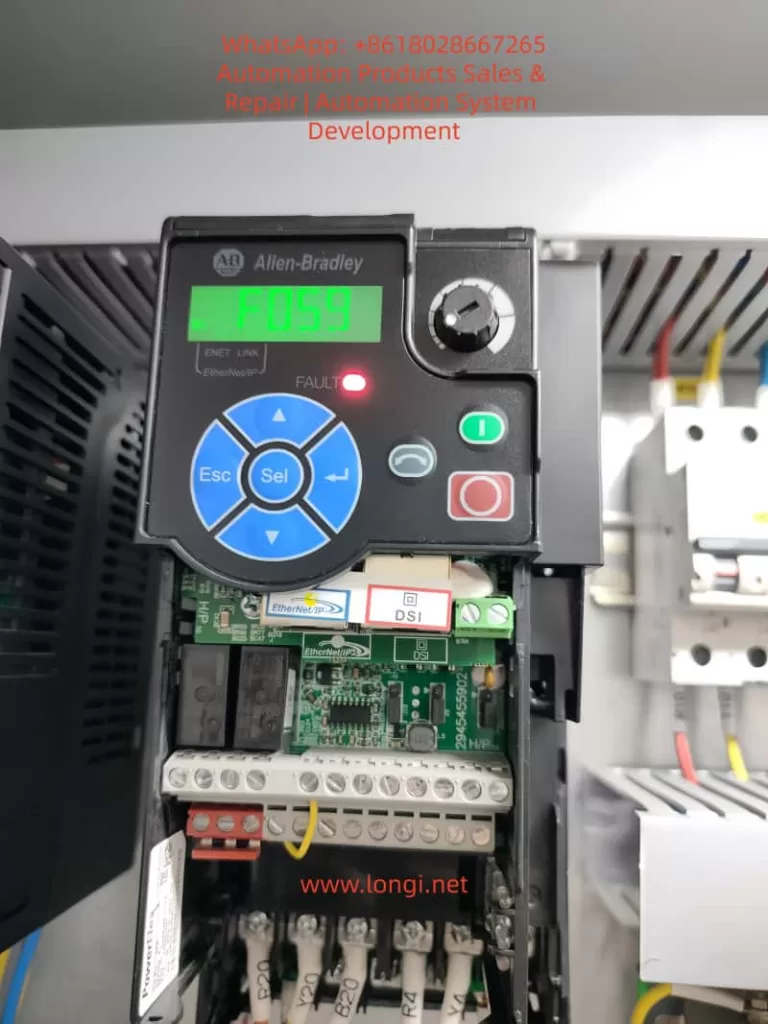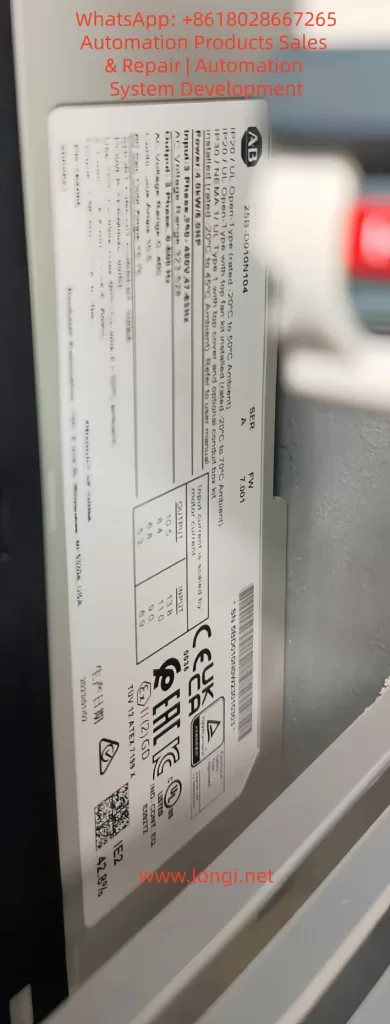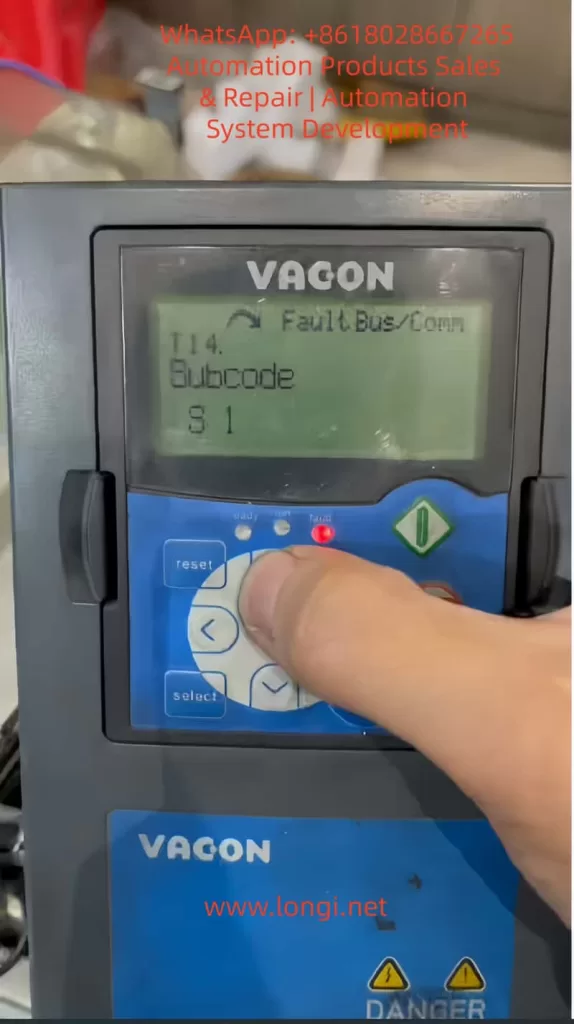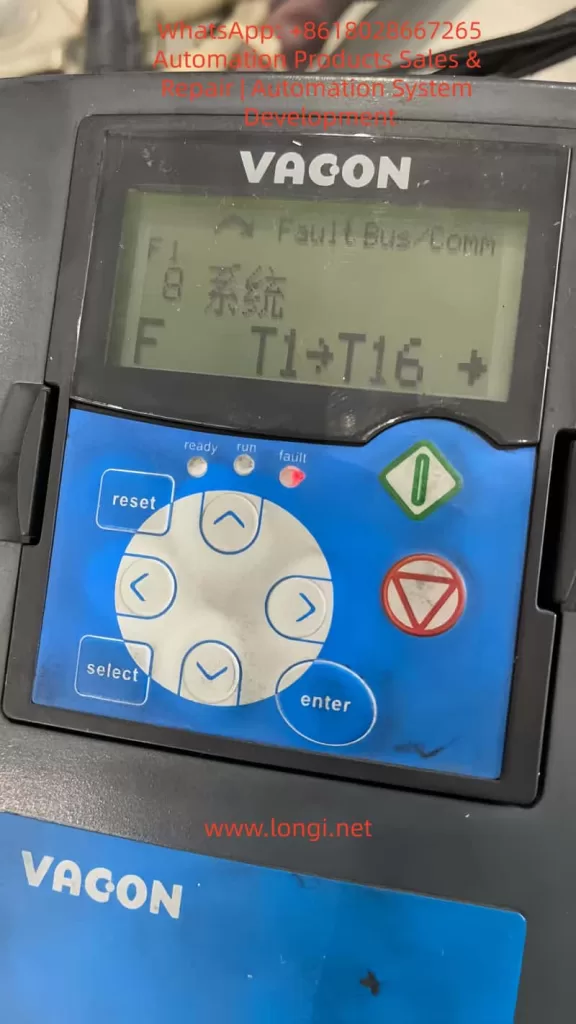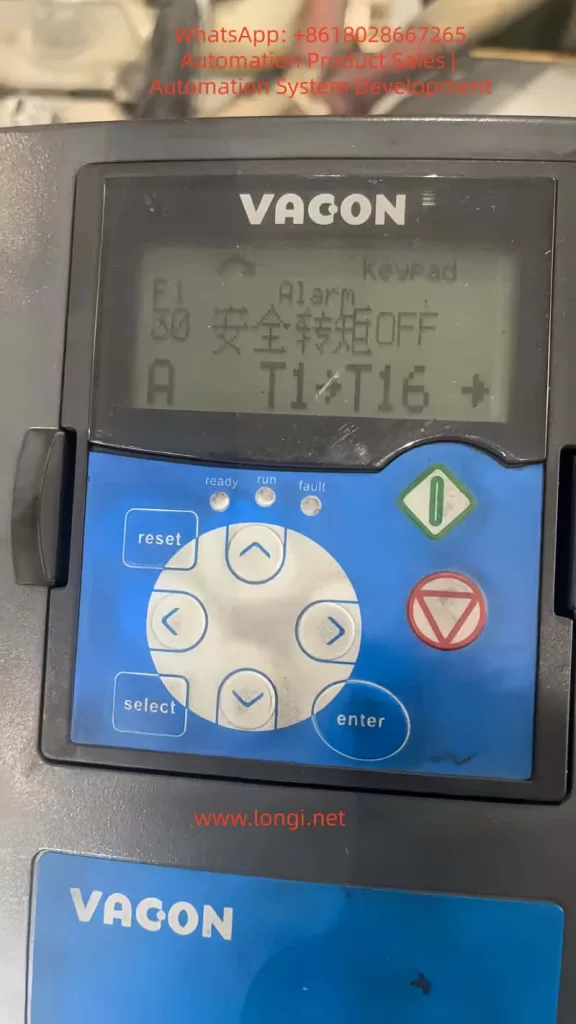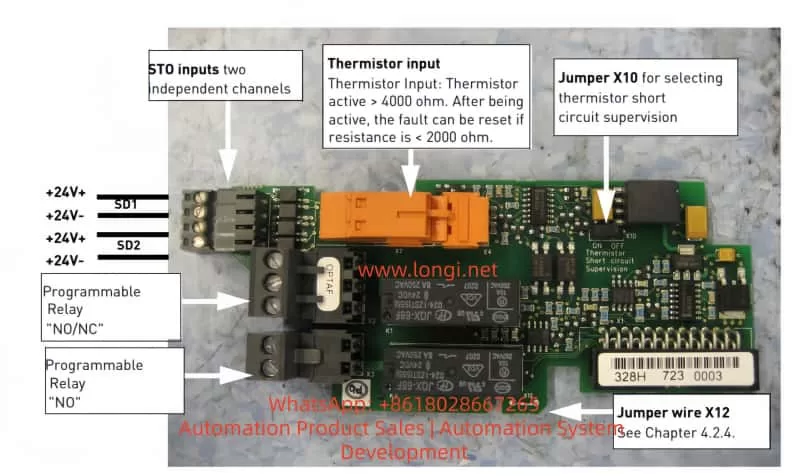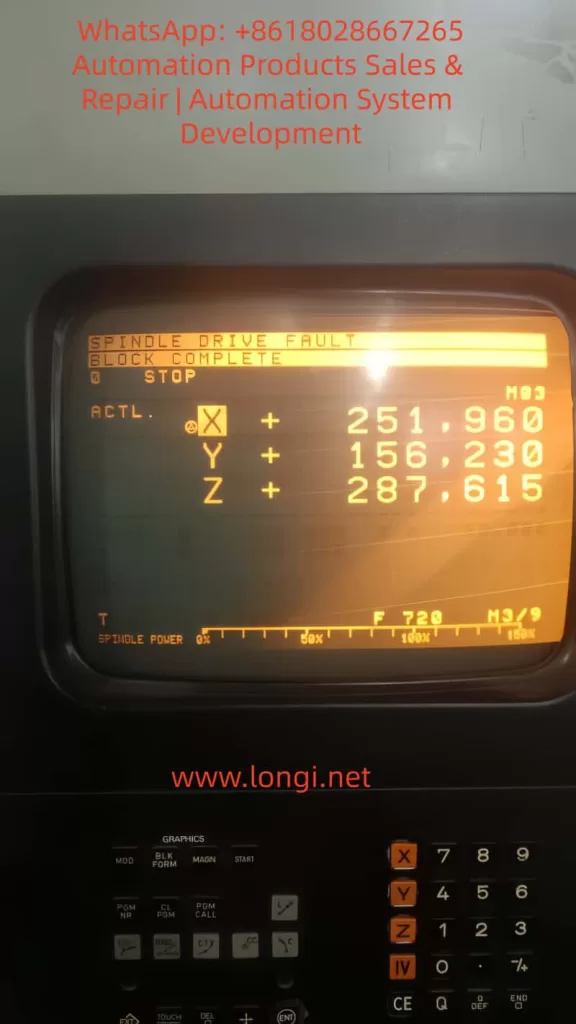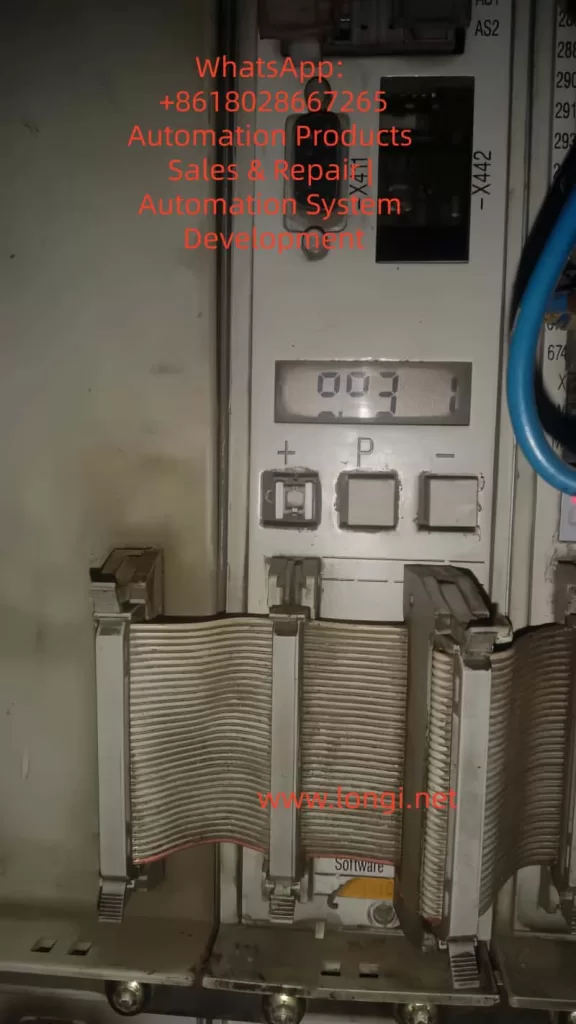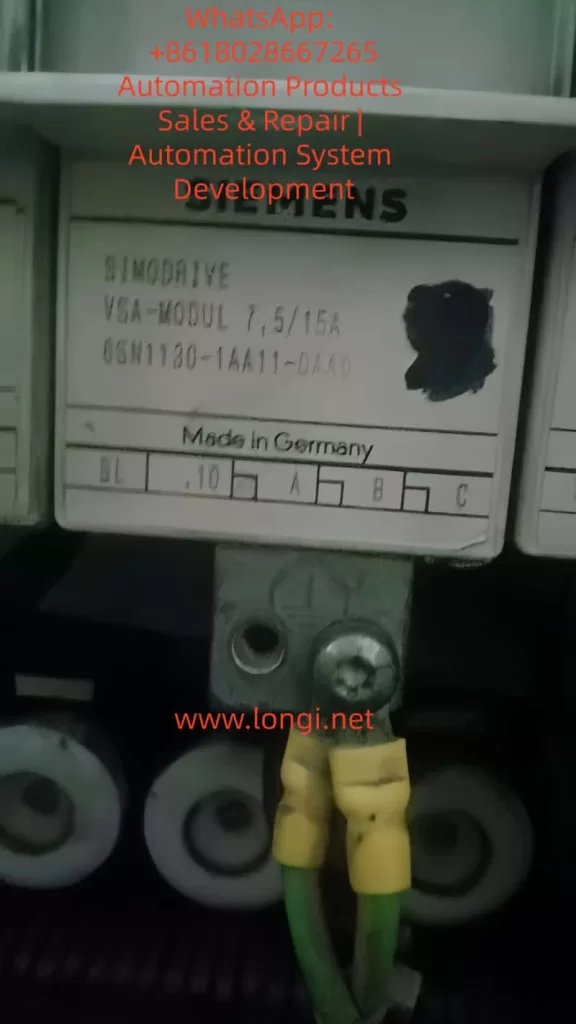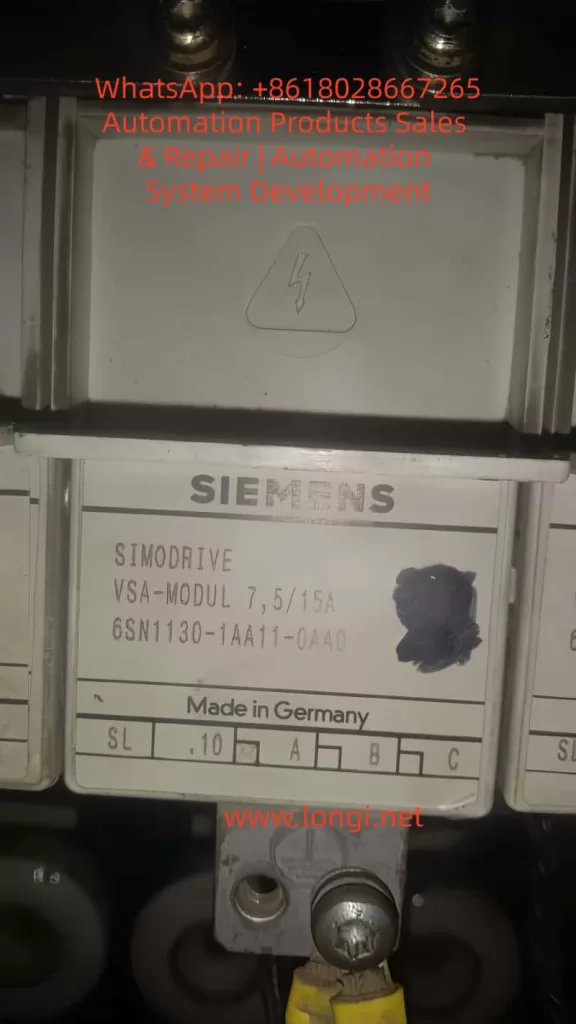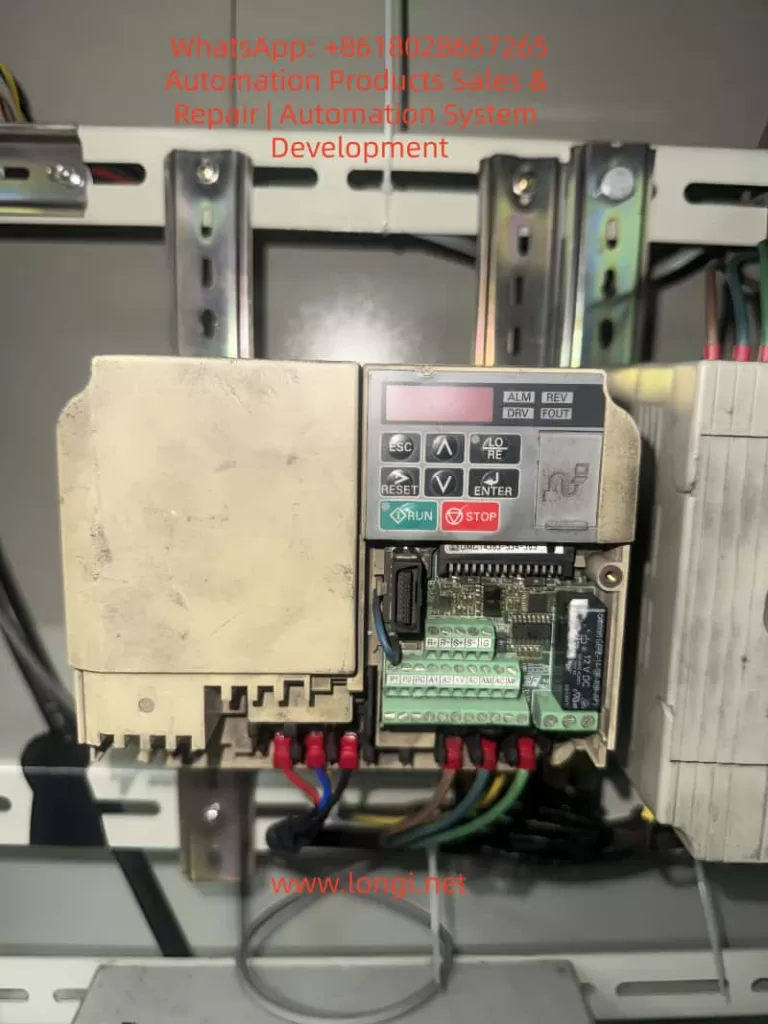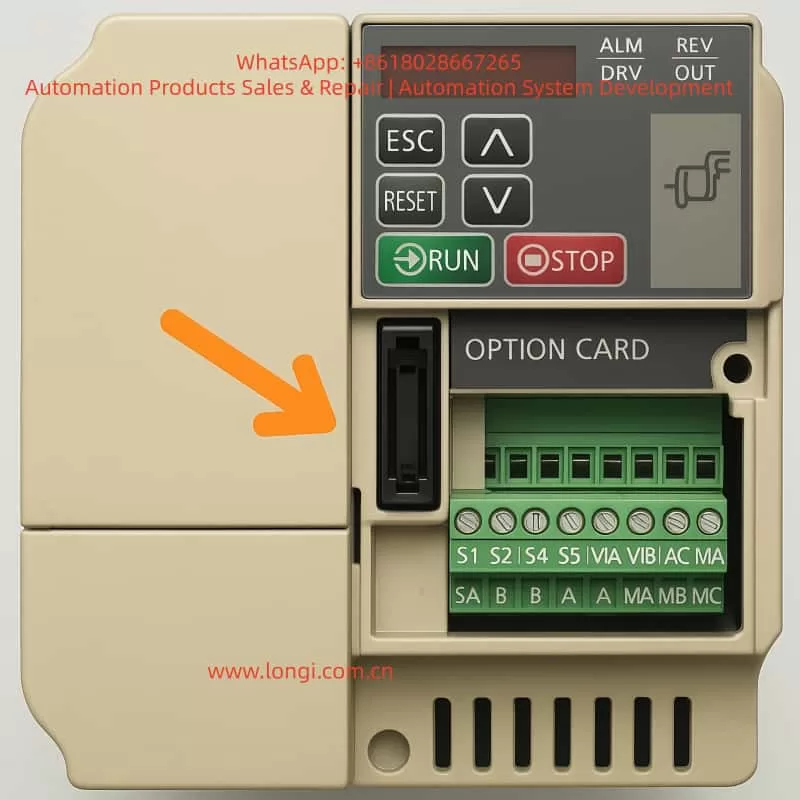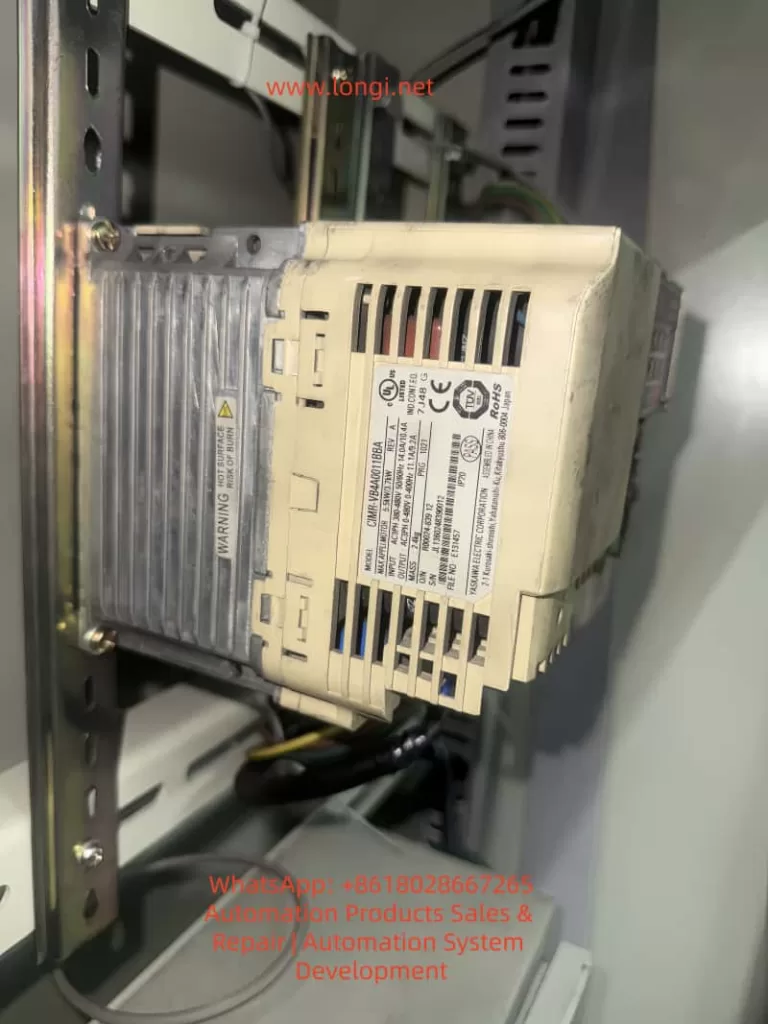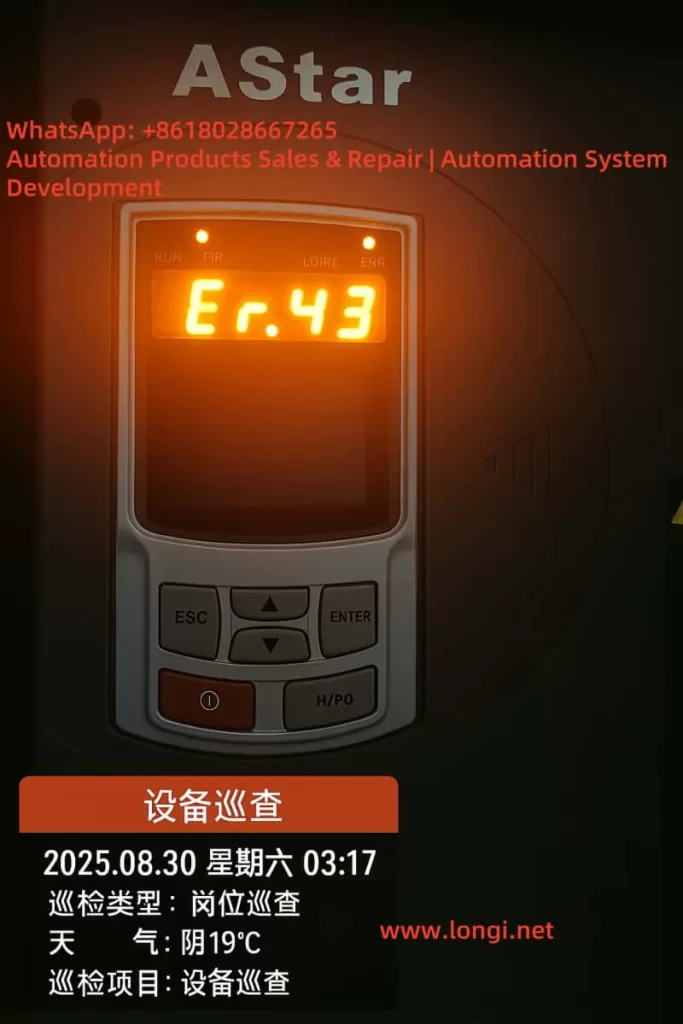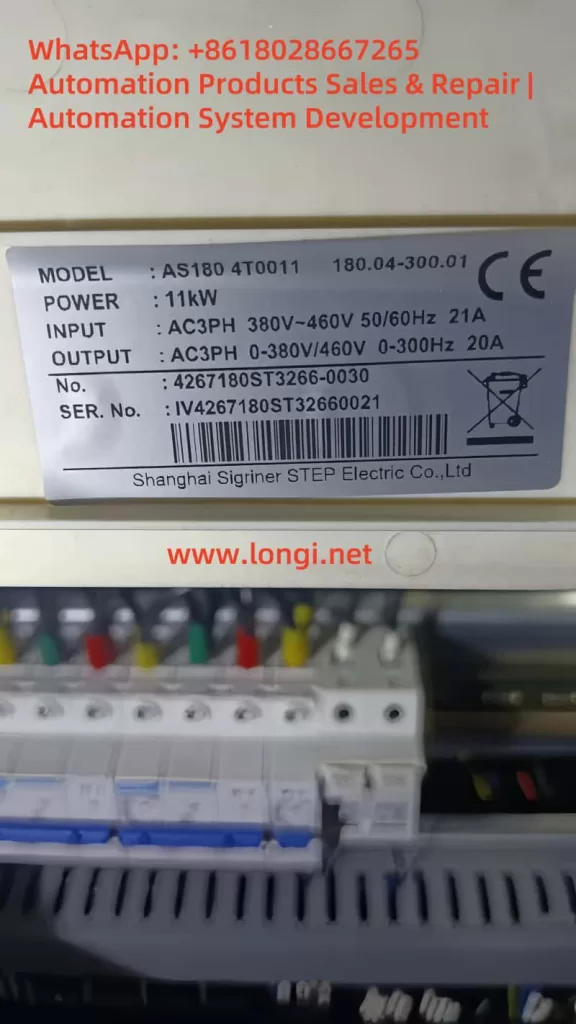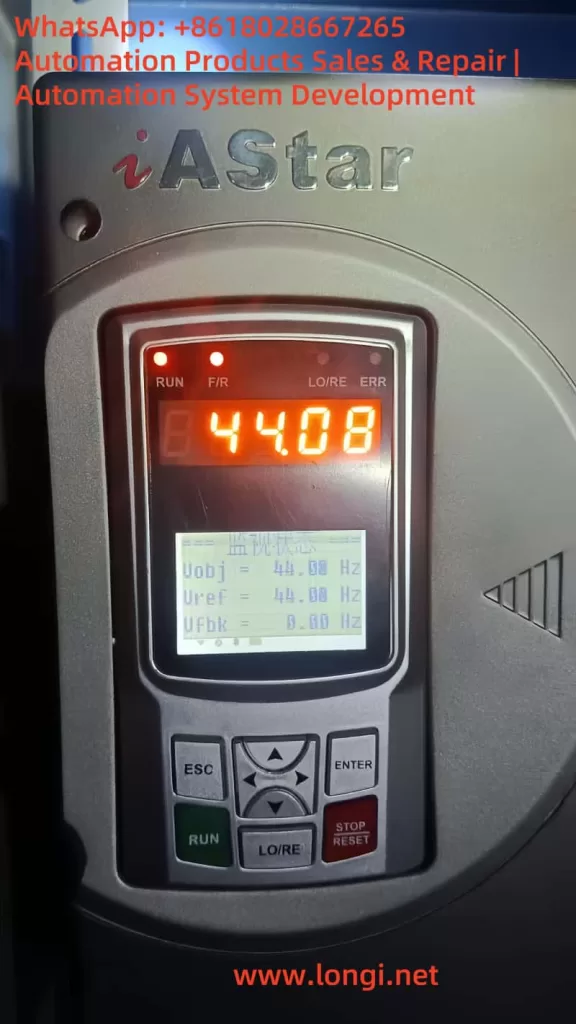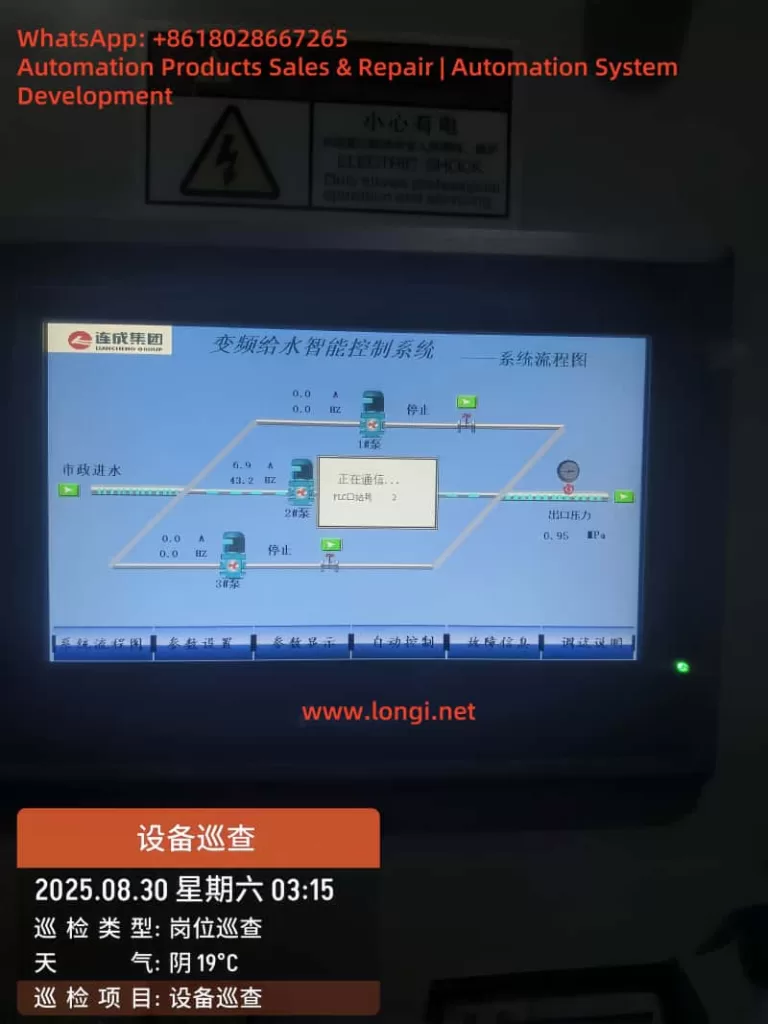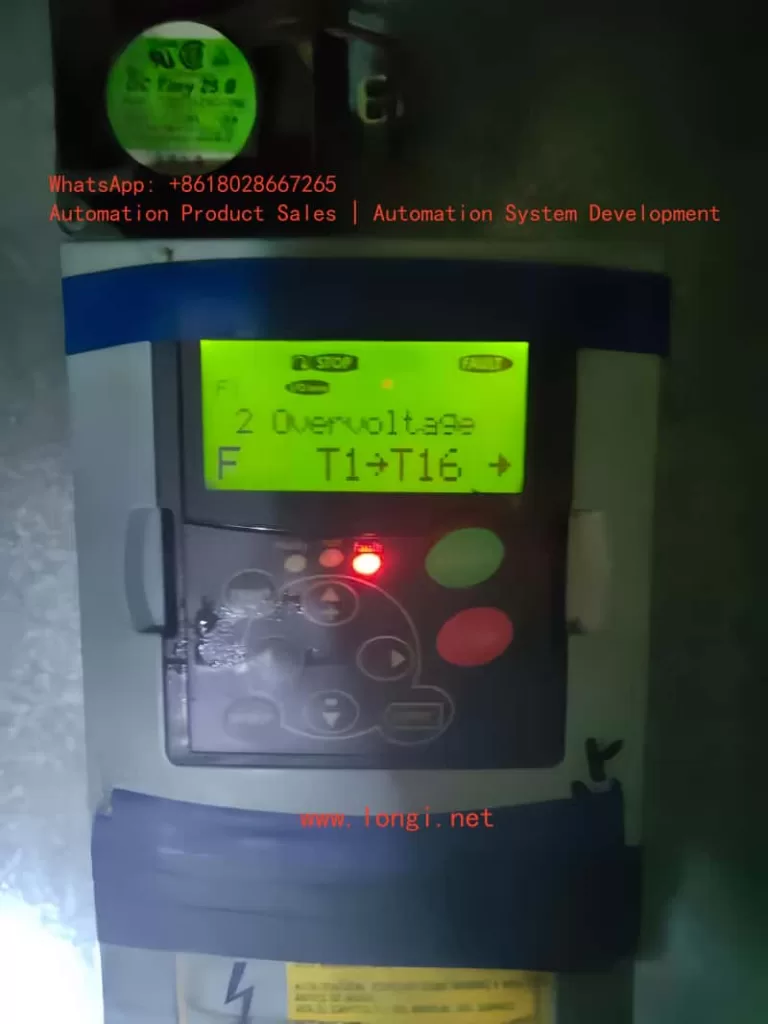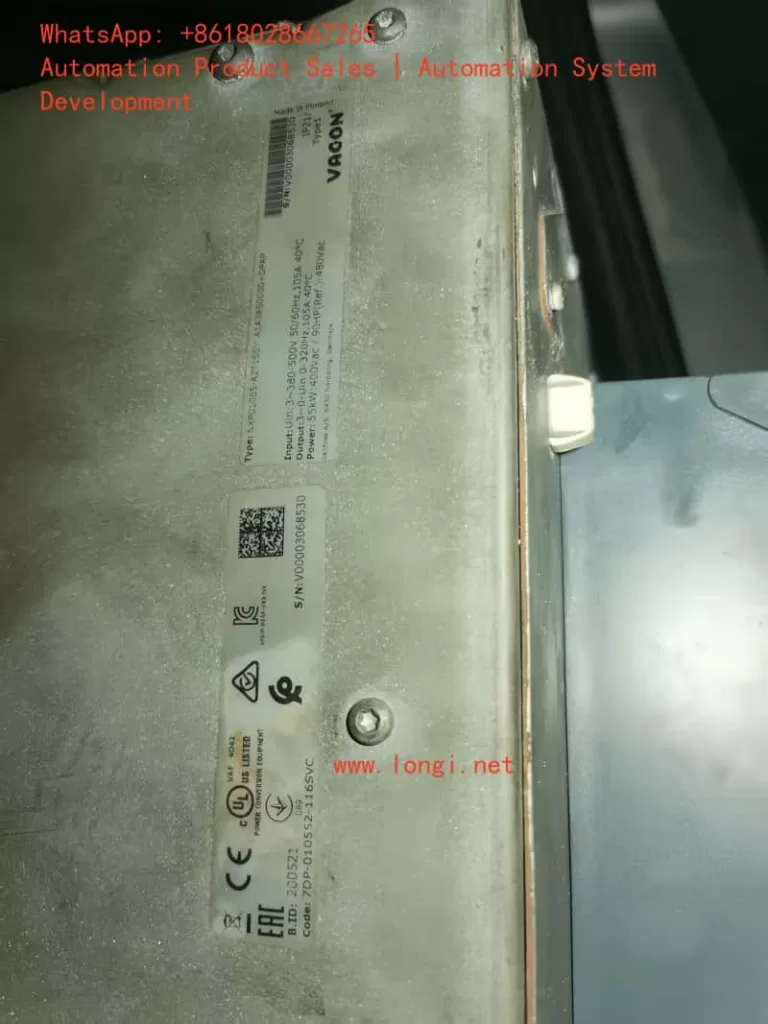Introduction
In modern industrial automation, Variable Frequency Drives (VFDs) have become the backbone of motor control systems. They regulate motor speed, improve energy efficiency, and provide precise process control. However, during operation or maintenance, technicians often encounter puzzling issues.
One common scenario is when a VACON drive powers up, the control panel works normally, but the READY indicator never turns on. At the same time, the monitoring menu shows DO1, RO1, and RO2 all in the OFF state.
At first glance, this situation may suggest a serious hardware fault. But in reality, the issue is usually tied to power supply conditions or run-enable signals, not an immediate hardware failure. This article will explain why the READY light fails to illuminate, what the OFF state of DO1/RO1/RO2 means, and how to systematically troubleshoot and resolve the problem.
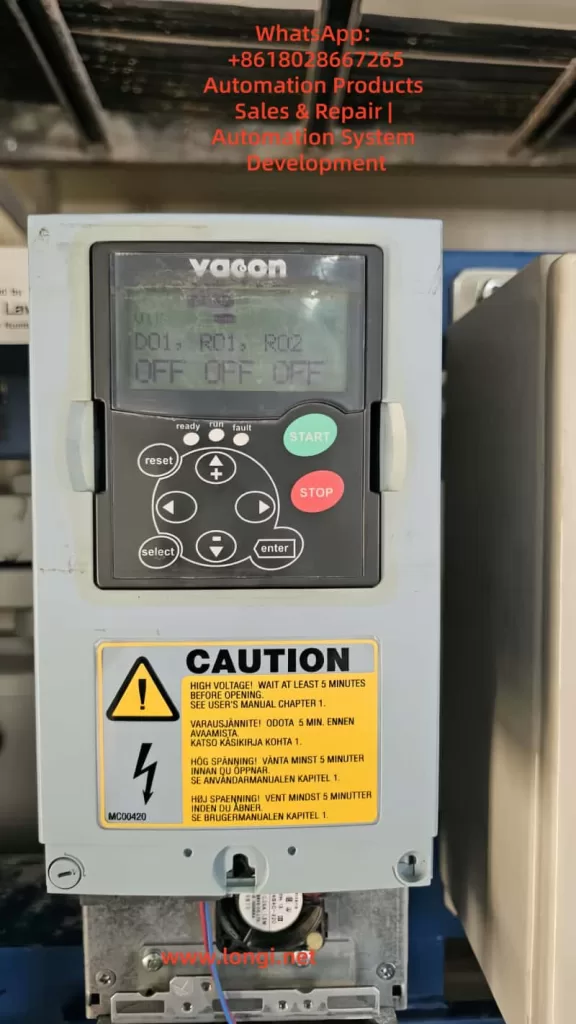
I. Basic Structure and Operation of VACON Drives
1. Power Unit vs. Control Unit
- Power Unit
Converts incoming three-phase AC power into DC through rectification, then uses IGBT modules to invert the DC back into controlled AC for the motor. The READY light only turns on when the power unit has AC input and the DC bus voltage is established. - Control Unit
Handles logic, parameter settings, monitoring, and communication. It can operate on external 24V control power even if the main power is disconnected. In this case, the keypad display works, but the READY light stays off.
2. Conditions for the READY Light
According to VACON manuals, the READY indicator lights up only when:
- The main AC supply (L1/L2/L3) is present and the DC bus voltage reaches its threshold.
- The drive completes its internal self-test without faults.
- Required external enable/run signals are active.
If any of these conditions are not met, the READY light remains off.
II. Why DO1, RO1, and RO2 Show “OFF”
On the VACON keypad, the monitoring menu may display DO1, RO1, and RO2: OFF. This does not necessarily indicate a failure.
- DO (Digital Outputs) and RO (Relay Outputs) are user-configured signals. Their ON/OFF status depends on the drive’s operating condition.
- When the drive is not in READY mode or not running, all outputs typically remain OFF.
Thus, seeing all outputs OFF is normal when the drive has not yet transitioned into READY state. The real issue is the absence of the READY signal.
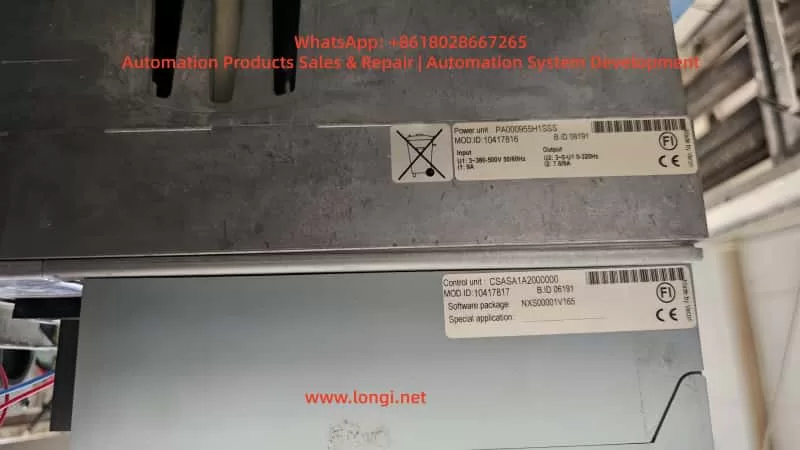
III. Common Causes for the READY Light Staying Off
1. Main Power Not Applied
- The control board may be powered by 24V auxiliary supply, so the keypad works.
- But if L1/L2/L3 main AC is not present, the DC bus is not charged, and the READY light will not turn on.
2. Missing Phase or Voltage Problems
- Even if AC supply is connected, a missing phase or abnormal input voltage prevents the DC bus from charging correctly.
- The drive will remain in a non-ready state.
3. Run-Enable Signal Not Closed
- Many installations require an external Run Enable or Safe Torque Off (STO) input to be active before the drive transitions to READY.
- If this input is open (for example, due to an emergency stop circuit or interlock), the READY light will not illuminate.
4. Active Faults Present
- If the drive has detected a fault (overcurrent, overtemperature, STO error, internal error), READY will not turn on until the fault is cleared.
- The keypad’s Active Faults menu (M4) should be checked.
5. Internal Hardware Failure
- Less common, but damaged power modules, DC link capacitors, or power supply circuits can prevent READY.
- These cases usually trigger fault codes, not just an OFF state.
IV. Step-by-Step Troubleshooting Procedure
To avoid incorrect assumptions or unnecessary replacements, follow a structured diagnostic process:
Step 1: Verify Main Power Supply
- Measure voltage at L1/L2/L3. Confirm presence of three-phase AC.
- Compare against the rated range (typically 380–500V for VACON NXS/NXP).
- If no voltage is present, check upstream breakers or contactors.
Step 2: Check DC Bus Voltage
- On the keypad, go to M1 → V1.8 (DC link voltage).
- A healthy 400V-class system should read around 540V DC when energized.
- If the value is near 0V, main power is not connected or rectifier is not operating.
Step 3: Inspect Run-Enable Inputs
- Navigate to M1 → V1.13 / V1.14 (digital input status).
- Verify that “Run Enable” or equivalent input is active.
- If external interlocks are open, READY will not be established.
Step 4: Review Active Faults
- Enter M4 Active Faults menu.
- If faults are listed, diagnose and clear them before expecting READY.
Step 5: Reset and Reapply Power
- Press RESET on the keypad.
- If unresolved, disconnect main power, wait at least 5 minutes, then reapply.
Step 6: Escalate to Hardware Inspection
- If power and signals are confirmed but READY is still off, inspect:
- Power modules (IGBT stage)
- DC bus capacitors
- Internal auxiliary power supply circuits
- These require professional service if damaged.
V. Real-World Case Studies
Case 1: Control Board Active, READY Light Off
At a manufacturing site, a VACON NXS drive displayed parameters on the keypad but showed no READY light. Investigation revealed that only the 24V auxiliary supply was applied, while the three-phase main input was disconnected. Once the breaker was closed, READY illuminated immediately.
Case 2: Missing Phase on Input
In a chemical plant, a VACON drive failed to reach READY state. Measurement showed one input fuse had blown, leaving the drive with only two phases. Replacing the fuse restored normal operation.
Case 3: Safety Circuit Open
On a packaging line, the drive’s READY light stayed off. Checking the digital inputs revealed that the Run Enable signal was inactive due to an emergency stop circuit being open. Resetting the E-stop allowed READY to activate.
VI. Preventive Maintenance and Best Practices
- Ensure Stable Power Supply
Regularly inspect incoming AC supply and fuses to prevent undervoltage or phase loss. - Maintain External Safety Circuits
Clearly label Run Enable and STO wiring. Periodically test emergency stops and interlocks to ensure proper operation. - Monitor DC Bus Capacitors
After several years of operation, bus capacitors may degrade, delaying or preventing READY. Routine inspection or preventive replacement is recommended. - Standardize Troubleshooting Procedures
Develop a ready-made diagnostic checklist for maintenance staff. This avoids unnecessary downtime and reduces the risk of wrong component replacements.
Conclusion
When a VACON drive shows DO1, RO1, RO2 all OFF and the READY light remains off, it does not necessarily mean the drive is defective. In most cases, the cause lies in:
- Main AC power not being applied,
- Abnormal voltage conditions,
- Run Enable signals not satisfied, or
- Active faults that need clearance.
By following a structured diagnostic process—checking power input, DC bus voltage, external inputs, and faults—technicians can quickly pinpoint the root cause.
Understanding this typical failure mode saves time, reduces unnecessary repair costs, and ensures smoother operation of industrial systems.

